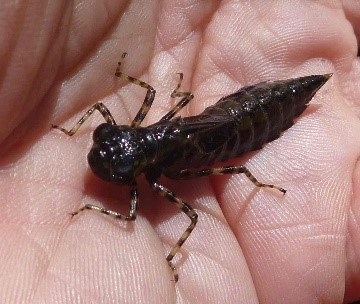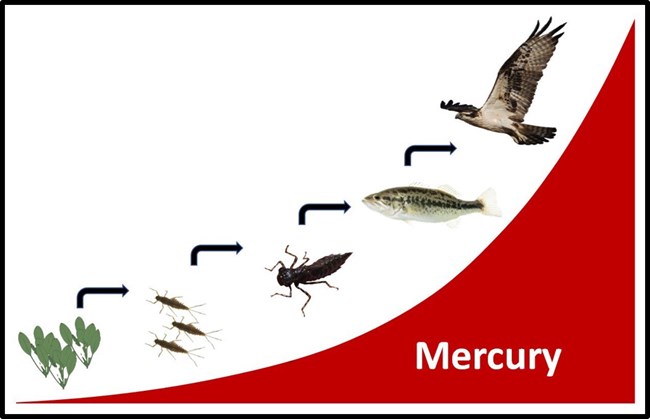Last updated: January 30, 2023
Article
Dragonfly Larvae
Dragonflies live in streams, wetlands, lakes, and other water bodies. We usually see adult dragonflies' shimmering wings and brightly-colored bodies zoom across the water’s surface. But just below the surface, on rocks, plants, and in the mud, are the juvenile dragonfly larvae. In fact, dragonflies spend most of their life in the water as larvae. In this form, they are an indicator of mercury in the environment.
The Dragonfly Mercury Project (DMP) uses dragonfly larvae as mercury bioindicators. What makes them good bioindicators?

U.S. Geological Survey
Dragonfly larvae:
- Eat a lot of smaller insects and even small fish, making them high on the food chain. Each time a predator eats prey with mercury inside, they take up that toxin too.
- Are food for many fish and birds. Those fish and birds are then eaten by other fish, birds, and mammals. Therefore, mercury in dragonfly larvae can tell us if there is a risk to humans and other animals.
- Are easy to catch with a net and to identify, unlike fish. They are also smaller than many fish, making them easier to sample and analyze. This makes for great volunteer work!
- Live in many different habitats, including ones where fish do not live. They are found on every continent except Antarctica.
- Are a surrogate for other freshwater animals. Mercury concentrations in dragonfly larvae reflect those found in fish and amphibians collected from the same places.
Read more about dragonfly larvae as bioindicators from Eagles-Smith et al. 2020 and Willacker et al. 2023.

NPS Air Resources Division
Dragonfly larvae are an important part of the aquatic food web. As a predator, they often have higher levels of mercury than other aquatic insects. They are also prey for other animals like fish and birds. This means the mercury contamination keeps getting passed along, possibly even to humans who eat those fish. By comparing dragonfly mercury concentrations to known toxicity thresholds for human and wildlife health, dragonfly data can inform mercury risk.
Dive Deeper into Dragonflies
We agree. They are hard to resist.
- Watch a video from our partners at the Schoodic Institute at Acadia on how to identify dragonfly larvae to different families. Volunteers for the Dragonfly Mercury Project get to try their hand at identifying larvae in the field!
- Check out the larval identification flashcards that Dragonfly Mercury Project participants use in the field.
- Click through this aquatic macroinvertebrate key to learn more about dragonfly larvae and other aquatic bugs.
- See how skillful our volunteers are at correctly identifying dragonflies by exploring our successes of citizen science.
Check out more DMP resources and learn how the project runs.
